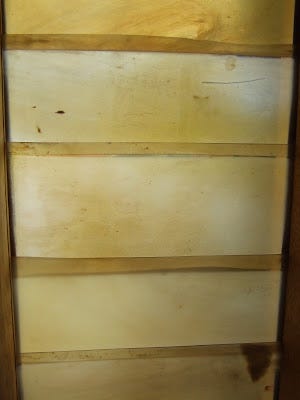How did Medieval people bring natural light into their homes?
How to glaze if you don't have glass.
Hello! I hope you are having a decent week.
Welcome to the newly named Portals to the Past where I’ll be sharing intriguing information gleaned from historical sites in the United Kingdom and its near neighbours.
In this issue I’m asking How did Medieval people bring natural light into their homes?
We tend to think Medieval houses were dim dwellings due to their small shuttered windows. Open to the elements, these would help evacuate smells and smoke from fires, rushlights, tallow candles, or fish-oil lamps, while allowing in fresh air. Or relatively fresh, depending how close was the household midden. And the neighbouring middens.

With this in mind I found it interesting to visit Barley Hall in York, England, saved and reconstructed during the 1980s after being discovered behind an almost derelict brick façade on the eve of a redevelopment project.
The oldest parts of the property date from 1360 when it was built as a ‘hospice’, or townhouse, close to the minster-cathedral. The owner was Nostell Priory some 35 miles distant by modern roads. At the time this Augustinian religious house supplied canons to administer services at the minster, and there was need of a private bolthole to retire to. Medieval inns wouldn’t, I imagine, be the ideal environment.
These men were literate, and to read and write they needed light, hence the surprising size of the windows.
If the wealthier abbeys could run to a few glazed, and sometimes decorated windows, people’s homes certainly could not. Glass remained inordinately expensive until relatively late (17th century). At Barley Hall, allowing in light while keeping the English weather at bay was achieved via two methods: oiled linen and horn. Neither would allow the viewer to look out, only for light to enter. But how much light?
Horn was plentiful as all cattle of the period bore them. Shambles is a narrow medieval street of jutting, wood-framed buildings a few minutes’ walk away, now full of quaint tourist shops, but it takes its name from the stalls on which the street’s butchers displayed their wares. The smell of household middens must have seemed sweet in comparison to the slurry trickling down the cobblestones to pollute the nearby River Foss. And let’s not think about the flies or rodent vermin.
Just as hooves went to manufacturers of glue, horns were purchased by artisans to make a variety of household utensils. Larger horns would be softened by boiling – more smells to add to the general whiffs – slit open and flattened. Depending on age and thickness, layers could be split away to give a two- or even a three-for-one depending on the skill of the worker. Trimmed to a usable rectangle, these were fitted in a frame to overlap, like a louvre, so rain would run down the outer side. The frame would then be attached to the window opening.
The ones I saw in Barley Hall looked extremely durable. Some were modern equivalents which could be touched, but others dated from the Medieval period. The transference of light was surprisingly good, more than enough to read or write by, despite the day I visited not enjoying wall-to-wall sunshine.

The other method of glazing was quicker, but perhaps not as durable and maybe more expensive. Fine linen, such as used for an undergarment, was stretched on a frame and oiled using linseed. How many coats of linseed oil, and how often it needed reapplying, wasn’t obvious. It gave a colder translucent light, but it certainly worked.
Perhaps even ordinary medieval homes, never mind the halls of the wealthy, weren’t quite the dark and dingy dwellings we imagine.
Barley Hall gained its second wing around 1430 when Nostell Priory gave up its hospice for rent to William Snawsell, a man of some political standing who lived there with his family for twenty years.
William Snawsell was a goldsmith and coiner by trade so would have been a member of the York goldsmiths’ guild, probably a leading member as at various times he was Chamberlain of the city, Sheriff, and Mayor and Alderman. He represented the city in the 1470-71 Parliament.

Barley Hall has been ‘dressed’ to reflect how it may have looked during his family’s period of occupation, complete with horn and oiled-linen window glazing.
I hope you enjoyed the excursion.
Sources:
Personal visit
Websites: Barley Hall, Historic England, Wikipedia (various pages), Wikimedia





